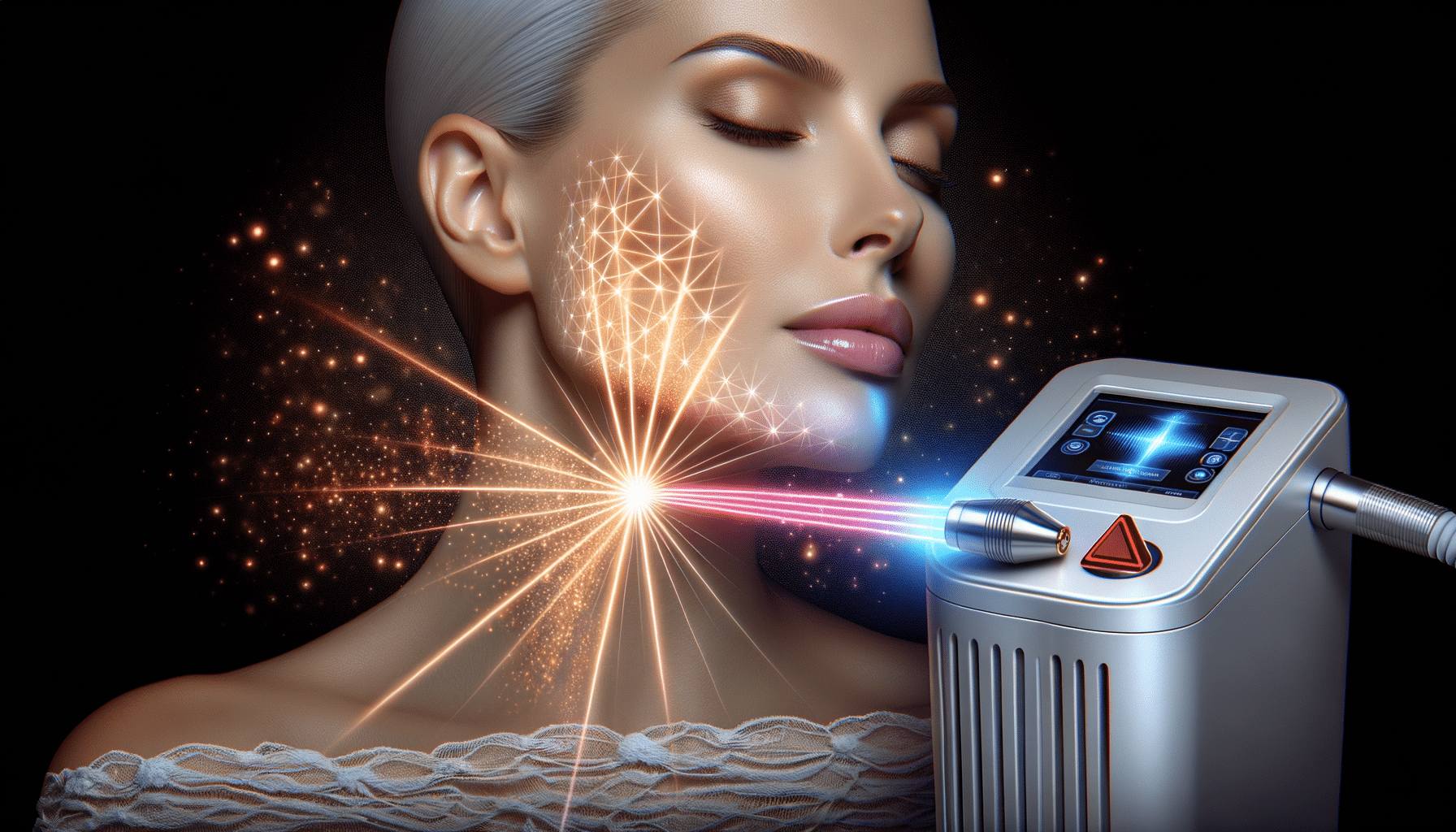Laser Skin Rejuvenation – Reveal Radiant Skin!
Renew your skin with advanced laser treatments that reduce fine lines, improve texture, and restore your natural glow.

Understanding Laser Skin Treatment
Laser skin treatment has revolutionized the way we approach skincare and anti-aging. By using focused light technology, it targets specific areas of the skin to address a variety of concerns, from reducing fine lines and wrinkles to improving skin texture and tone. The precision of laser treatments allows for targeted therapy, ensuring that surrounding tissues remain unharmed. This approach not only enhances effectiveness but also reduces recovery time compared to traditional methods.
There are several types of laser treatments available, each suited for different skin issues. For instance, ablative lasers remove the outer layers of the skin, promoting the growth of new, healthier skin. Non-ablative lasers, on the other hand, work beneath the skin’s surface to stimulate collagen production, offering a subtler approach with minimal downtime.
The versatility of laser treatments makes them an attractive option for many. They can address a variety of skin concerns, including:
- Sun damage and age spots
- Acne scars
- Uneven skin tone
- Enlarged pores
- Rosacea
Understanding the different types of lasers and their applications is crucial for anyone considering this treatment. Consulting with a qualified dermatologist or skincare professional can help tailor the treatment to your specific needs, ensuring optimal results.
The Science Behind Laser Skin Rejuvenation
At the heart of laser skin treatment is the science of selective photothermolysis, a process that allows lasers to precisely target specific skin structures without damaging surrounding tissues. This precision is achieved by varying the wavelength, pulse duration, and energy level of the laser to match the absorption characteristics of the targeted tissue.
For instance, lasers used for removing pigmentation issues work by targeting melanin, the pigment responsible for skin color. By absorbing the laser energy, the melanin is broken down and gradually eliminated by the body’s natural processes. Similarly, lasers aimed at reducing wrinkles stimulate the production of collagen, a vital protein that maintains skin elasticity and firmness.
Recent advancements in laser technology have introduced fractional lasers, which create tiny columns of micro-damage in the skin. This stimulates a natural healing process, leading to the production of new collagen and elastin fibers, resulting in smoother, firmer skin.
These scientific principles ensure that laser treatments are not only effective but also safe when performed by trained professionals. As technology continues to evolve, we can expect even more refined and efficient laser treatments in the future.
Comparing Laser Treatments with Other Skin Rejuvenation Methods
When considering skin rejuvenation options, it’s important to compare laser treatments with other available methods to make an informed decision. Common alternatives include chemical peels, microdermabrasion, and microneedling, each with its own set of benefits and limitations.
Chemical peels use acid solutions to exfoliate the skin, removing dead cells and promoting the regeneration of new skin layers. While effective for surface-level concerns, they may not penetrate as deeply as laser treatments, making them less suitable for addressing deeper wrinkles or scars.
Microdermabrasion involves mechanical exfoliation, using fine crystals or a diamond-tipped wand to remove the outermost layer of skin. This method is gentle and suitable for all skin types, but like chemical peels, its effects are primarily superficial.
Microneedling, on the other hand, uses tiny needles to create controlled micro-injuries in the skin, stimulating collagen production. While effective for improving texture and tone, it may not offer the precision of laser treatments in targeting specific pigmentation issues.
Laser treatments, with their ability to target specific skin structures and stimulate collagen production, offer a more comprehensive solution for a wide range of skin concerns. However, the choice between these methods should be guided by individual skin needs and professional advice.
Potential Risks and Considerations
Like any medical procedure, laser skin treatments come with potential risks and considerations that should be carefully evaluated. While generally safe, it’s important to be aware of possible side effects, which can include redness, swelling, and temporary changes in skin pigmentation.
In rare cases, laser treatments can lead to scarring or infection, particularly if post-treatment care instructions are not followed. Therefore, selecting a qualified and experienced practitioner is crucial to minimize these risks.
Another consideration is the suitability of laser treatments for different skin types. While advancements have made lasers safer for a variety of skin tones, certain lasers may still pose a higher risk of pigmentation changes in individuals with darker skin. This highlights the importance of consulting with a skincare professional who can tailor the treatment to your specific skin type and concerns.
Finally, it’s essential to have realistic expectations about the outcomes of laser treatments. While they can significantly improve skin appearance, they may not completely eliminate all imperfections. Discussing your goals and potential results with a professional can help set achievable expectations.
Preparing for Your Laser Treatment
Proper preparation is key to maximizing the benefits of laser skin treatments and ensuring a smooth recovery. Before undergoing treatment, a consultation with a dermatologist or skincare expert is essential to assess your skin’s condition and determine the most appropriate laser type.
In the weeks leading up to the procedure, it’s advisable to avoid sun exposure and tanning, as these can increase the risk of complications. Additionally, certain skincare products, such as those containing retinoids or glycolic acid, may need to be discontinued to prevent irritation.
On the day of the treatment, the skin should be clean and free of makeup, lotions, or perfumes. Following the procedure, adhering to post-treatment care instructions is crucial for optimal healing. This may include applying soothing creams, avoiding sun exposure, and refraining from using harsh skincare products.
By preparing adequately and following professional advice, you can enhance the effectiveness of your laser treatment and enjoy the benefits of rejuvenated, radiant skin.